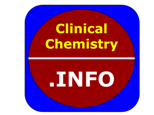Clin Chem Lab Med. 2025 Apr 11. doi: 10.1515/cclm-2025-0331. Online ahead of print.
ABSTRACT
INTRODUCTION: To analyze the available evidence about the correlation between the presence of detectable amounts of clostebol metabolites in urine and the transdermal or transmucosal contact of clostebol.
CONTENT: A systematic review was performed. A systematic search was conducted in PubMed/MEDLINE, Scopus, Web of Science and the Cochrane library databases. Criteria for including studies were clinical studies reporting: (i) adult subjects; (ii) detection of urine clostebol metabolites derived from transdermal or transmucosal contact of clostebol.
SUMMARY: Seven papers pertinent to our questions were found: 3 case reports, one experimental study and 3 case reports with an experimental section for a total of 32 subjects. The median concentration of urine clostebol’s metabolite 4-chloro-androst-4-en-3α-ol-17-one, M1 was 0.5 ng/mL (range 0.086-4.000 ng/mL; 25%-75 % IQ: 0.5-0.9 ng/mL) and 8.1 ng/mL (range 1.0-36.6 ng/mL; 25%-75 % IQ: 2.8-22.0 ng/mL), in subjects with indirect and direct exposure of clostebol, respectively (p=0.005).
OUTLOOK: We found consistent data that the detection of M1 in urine can be reconcilable with a transdermal or transmucosal contact of clostebol. In the cases of indirect exposure, the urine concentrations of M1 seem to be far lower than the concentrations found in case of direct exposure.
PMID:40205971 | DOI:10.1515/cclm-2025-0331
